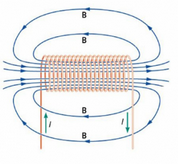Nuclear magnetic resonance RMN
Laboratory > Physicals
| Nuclear magnetic resonance (RMN) | |
Nuclear Magnetic Resonance (NMR) of solids is a non-destructive technique and one of the most powerful to carry out qualitative and quantitative analysis of solid materials due to the great variety of information it offers. Nuclear magnetic resonance (NMR) is a physical phenomenon based on the quantum-mechanical properties of atomic nuclei. The characterization of polymers by nuclear magnetic resonance (NMR) spectroscopy provides detailed structural information for product development and quality control. The NMR in solid state allows us to study physical and chemical properties of samples in crystalline or amorphous state. The applications include the determination of the molecular structure, properties of materials (flexibility, fragility, ...), intermolecular packing in amorphous solids, evolution of materials eg. evolution of the degree of hydration of a polymer, inorganic polymer composition. The characterization of polymers by nuclear magnetic resonance (NMR) spectroscopy provides detailed structural information for product development and quality control considerations. We provide polymer NMR analysis to evaluate the types of monomers, levels and distribution (block or random), chain branching, sequencing, polymer tactics, molecular weight (MW), end groups, structure and the cocomonos. |  |
In solid NMR, it is a system of nuclear spins in the presence of a static magnetic field capable of absorbing radiofrequency (RF) energy when radiated with an RF source. Due to the low mobility of atoms and molecules, the spectra obtained show wide signals as a consequence of the different orientations of spins in space. In addition, each nucleus is affected, depending on the relative orientation of the molecule, its electronic distribution, the external magnetic field and the fields created in nearby nuclei. The main interactions responsible for the widening of the signals are the anisotropy of the chemical shift, the dipolar couplings (homo and heteronuclear) and the quadrupole coupling. |  |
